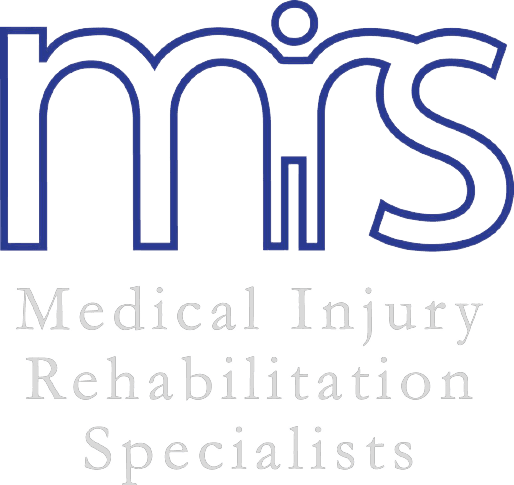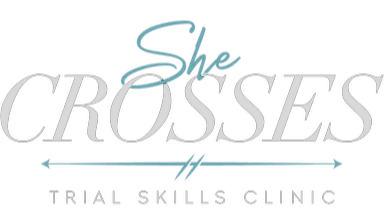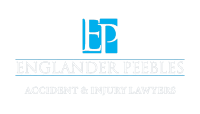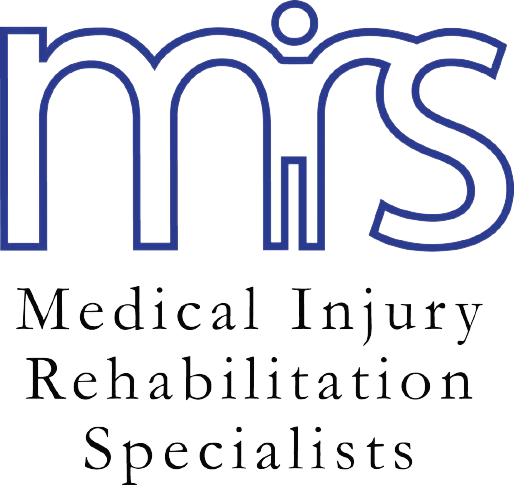The Role of UX and UI in Building Trust for Law and Medical Firms
Trusted by The Top Medical Legal Organizations in the Nation
In the digital world, trust begins long before a conversation. For law and medical firms, that first moment often happens online — on a website.
A well-designed site doesn’t just communicate information; it communicates integrity. The way users navigate, interact, and feel within a digital environment shapes how they perceive professionalism. A confusing or outdated interface can erode confidence immediately, while a clear, elegant one signals authority and care.
That’s why User Experience (UX) and User Interface (UI) design are no longer optional elements of web development — they are fundamental tools for building trust.
The Casely Group creates platforms that go beyond aesthetics, focusing on usability, accessibility, and intuitive design principles that strengthen relationships between professionals and their clients.
Why UX and UI Matter in Professional Industries
Unlike e-commerce or entertainment sites, law and medical websites carry a heavier responsibility: they must handle sensitive information while communicating empathy, reliability, and expertise.
For example:
- A potential client visiting a law firm website is often anxious and looking for quick answers.
- A patient exploring a medical site needs reassurance and clarity.
In both cases, how the website behaves — its speed, layout, tone, and structure — will determine whether the visitor feels safe enough to proceed.
UX and UI design bridge that emotional gap, transforming digital interactions into experiences that build confidence and connection.
This philosophy aligns closely with building trust and compliance secure AI-powered web platforms for law firms and medical, where human-centered design merges with advanced technology to ensure both performance and security.
The Psychology of Trust in Design
Trust in design operates on both conscious and subconscious levels. Visitors form opinions about a website’s credibility within seconds — long before reading a single paragraph.
Key design elements that foster trust include:
- Visual clarity: Clean layouts with balanced white space communicate transparency.
- Predictability: Consistent navigation helps users feel in control.
- Responsiveness: Mobile optimization signals modernity and reliability.
- Load speed: Fast pages subconsciously indicate efficiency and professionalism.
A site that looks trustworthy feels trustworthy — and that perception becomes action.
Law and medical firms that invest in thoughtful design are not just upgrading visuals; they’re investing in psychological reassurance.
The Harmony Between UX and UI
While UX and UI are distinct, their harmony determines a site’s success.
- UX (User Experience) defines structure, flow, and functionality — the blueprint that ensures users can navigate easily.
- UI (User Interface) handles the visual layer — color palettes, typography, icons, and images that evoke emotion and reinforce brand identity.
When these two disciplines align, they create seamless digital environments that make users feel guided, understood, and respected.
This synergy is at the core of high performance web development and software for law firms, where every design choice contributes to engagement, accessibility, and client retention.

Creating Clarity Through Structure
Complex information doesn’t need to feel complicated.
Law and medical websites often host a wide range of content — practice areas, case studies, procedures, forms, or compliance resources. Without structure, that information becomes overwhelming.
Effective UX organizes it intuitively:
- Hierarchical navigation allows users to move from general topics to specifics.
- Consistent visual cues guide attention where it matters most.
- Readable typography and spacing reduce cognitive strain.
Visitors shouldn’t have to think about how to find what they need — the design should do that thinking for them.
This clarity enhances credibility and helps users take action confidently, whether scheduling consultations or requesting appointments.
Empathy as a Design Strategy
The best UX design begins with empathy — understanding how visitors feel at every point in their digital journey.
A law client seeking help after a stressful event or a medical patient researching a diagnosis is likely anxious, vulnerable, or overwhelmed. Design that acknowledges these emotions creates a sense of safety.
Empathetic design includes:
- Warm color palettes that soothe rather than intimidate.
- Supportive language that offers reassurance.
- Accessible layouts for users of all abilities.
This people-first approach ensures digital experiences mirror the compassion professionals demonstrate in real life.
It reflects the modern philosophy of web development and software solutions for law firms the modern approach, where design innovation serves human connection above all else.
Accessibility and Inclusion: Expanding Trust
An accessible website is not only an ethical necessity — it’s a trust signal.
When a firm’s website is usable by everyone, regardless of ability, it communicates respect and inclusivity.
Accessibility involves more than compliance with WCAG standards. It’s about ensuring:
- Screen reader compatibility for visually impaired users.
- Keyboard navigation for individuals unable to use a mouse.
- High-contrast visuals for clear readability.
- Captions and transcripts for multimedia content.
Firms that prioritize accessibility demonstrate attention to detail and care for all clients — qualities that define true professionalism.
Performance and Precision
Even the most beautiful design fails if it doesn’t perform. Users expect lightning-fast load times, error-free forms, and responsive layouts across devices.
Performance optimization includes:
- Minimizing code bloat for faster load speeds.
- Hosting on secure, scalable servers.
- Implementing caching and compression strategies.
The Casely Group’s development process ensures that design and performance work hand in hand. Every animation, transition, and interaction is optimized to feel effortless, creating an experience that aligns with the standards of professional excellence.
Brand Consistency: The Visual Language of Trust
A consistent brand identity reinforces confidence. When colors, fonts, and imagery stay aligned across all digital channels, users begin to associate them with reliability.
That’s why The Casely Group integrates brand guidelines directly into the UI process — ensuring that every visual detail, from buttons to banners, reflects the firm’s tone and values.
This consistency enhances recognition and builds credibility across all client touchpoints.
Data-Driven Design Decisions
Modern UX and UI are guided by analytics. Every user interaction — from click paths to scroll depth — provides insight into how people experience a site.
By studying this data, The Casely Group refines design decisions that improve clarity, retention, and conversion rates.
For instance, heatmaps may reveal where users hesitate or drop off, leading to targeted improvements in layout and structure.
This analytical approach ensures the design evolves based on real human behavior, not guesswork.
The Role of Advanced Platforms
As digital ecosystems grow more complex, firms require web platforms that integrate both intelligence and flexibility.
The Casely Group builds on frameworks designed for scalability, AI integration, and compliance automation. These systems ensure that future enhancements — from client portals to predictive analytics — can be added seamlessly.
This focus on forward-thinking technology reflects the principles of how advanced web platforms improve client experience, where intelligent systems are designed to strengthen both functionality and trust.
Designing for Emotional Impact
Emotion plays a quiet but powerful role in how users perceive a website. Subtle visual cues can influence whether someone feels comforted, confident, or uncertain.
The Casely Group employs principles of emotional design, using psychology-backed techniques to evoke positive feelings of safety and professionalism.
For law and medical firms, these emotions are essential. A calm, confident digital tone mirrors the values that clients look for in high-stakes professional relationships.
Design that feels human, reliable, and composed becomes an extension of the firm’s brand promise.
The Casely Group’s UX and UI Design Framework
- Research & Discovery – Understand client goals, audience expectations, and emotional tone.
- Information Architecture – Create logical site structures that simplify complexity.
- Prototyping & Testing – Validate every interaction through user feedback.
- Interface Design – Align visuals with brand identity and emotional appeal.
- Optimization & Evolution – Use analytics to refine and evolve continuously.
This method ensures that each site is not only visually compelling but also strategically aligned with performance, accessibility, and emotional engagement.
The Future of Trust in Web Design
As AI and automation continue to evolve, the most successful firms will remain those that combine digital intelligence with human understanding.
UX and UI will continue to serve as bridges between technology and empathy, ensuring that even the most advanced platforms feel personal and authentic.
The Casely Group remains at the forefront of this balance — designing web environments that reflect both innovation and integrity.
Because in a world where first impressions happen online, trust isn’t just built through words. It’s built through experience.
Connect With Our Sales Team & Learn How to Augment Your Marketing Performance
By submitting this form, I confirm that I have read and understood the The Casely Group's Privacy Statement. This site is protected by reCAPTCHA and the Google Privacy Policy and Terms of Service apply.
How Conversion-Focused Web Development Improves Lead Quality for Law Firms
Learn how conversion-focused web development helps law firms attract higher-quality leads through pe...
How Law Firms Use Video Ads to Stay Top of Mind During Long Legal Decision Cycles
Learn how law firms use video ads to stay top of mind, build trust over time, and convert prospects ...
How Integrated Marketing Strategies Help Law Firms Turn Visibility Into Consistent Client Growth
Discover how integrated marketing strategies help law firms turn digital visibility into consistent ...
The Role of Web Development in Creating Frictionless Client Journeys for Law Firms
Learn how modern web development helps law firms create frictionless client journeys that build trus...
How Video Ads Build Immediate Trust for Law Firms in High-Stakes Legal Decisions
Learn how strategic video ads help law firms build immediate trust, connect emotionally with prospec...
How Data-Driven Marketing Helps Law Firms Transform Engagement Into Measurable Growth
Learn how data-driven marketing helps law firms turn engagement into measurable growth through analy...
Why Scalable Web Architecture Is Essential for Growing Law Firms in 2026
Discover why scalable, secure, and high-performance web architecture is essential for law firms seek...
"Davin Casely is the most relentless marketing professional that I have ever met... He is a Marketing Genius... If you don't hire him, then you don't want to make money..."

Dan Ambrose, CEO of Trial Lawyers University
"Davin Casely uses his skills masterfully in the world of sales, because it is precisely his particular ability to convey empathy that guides the sales journey with his clients."

Dr. Hector Miranda, Medical Director
"If You're Going to Bet On Someone, Bet on Davin Casely…"

Ricky Velasquez






































































































































